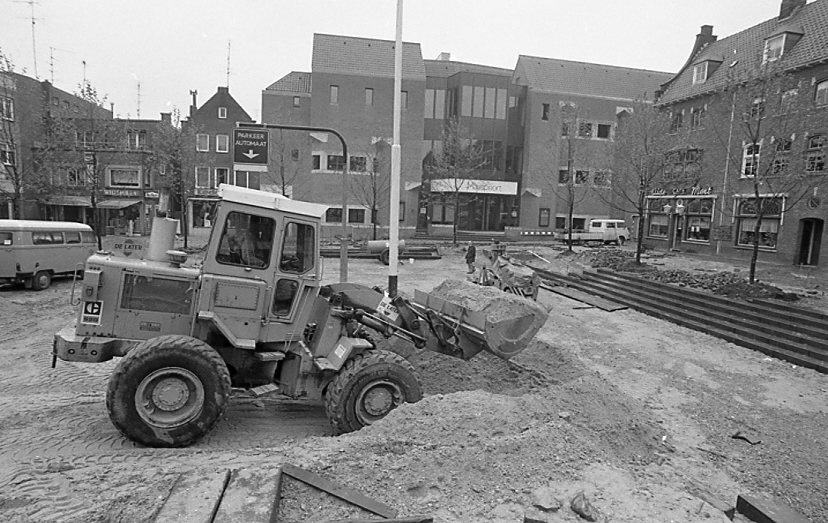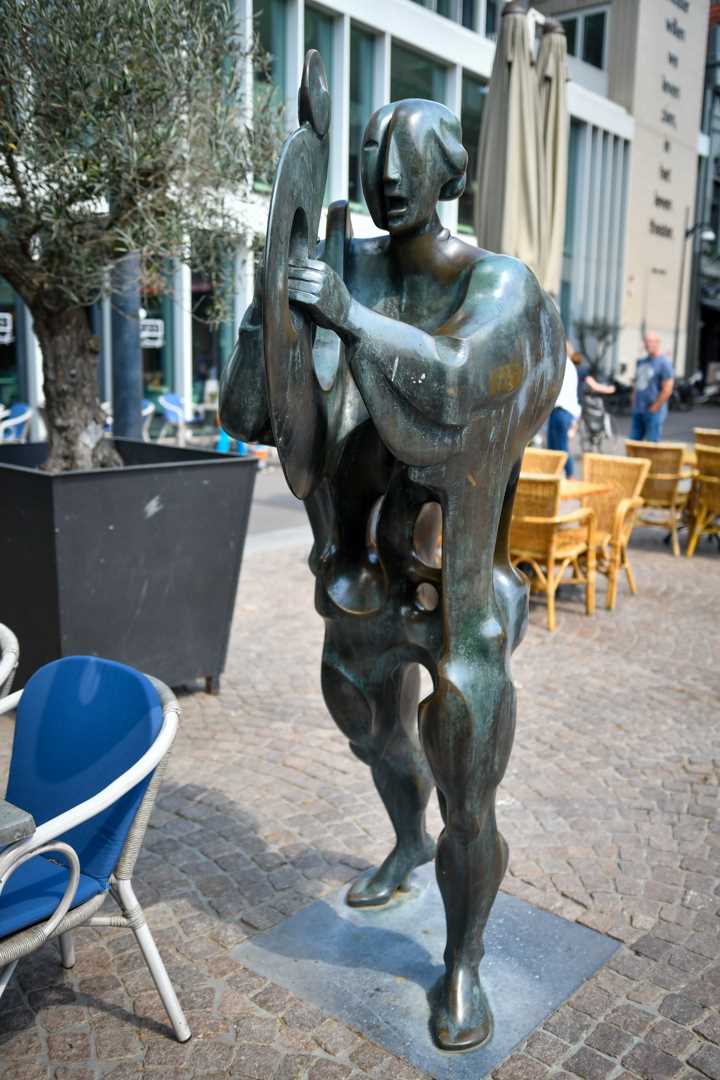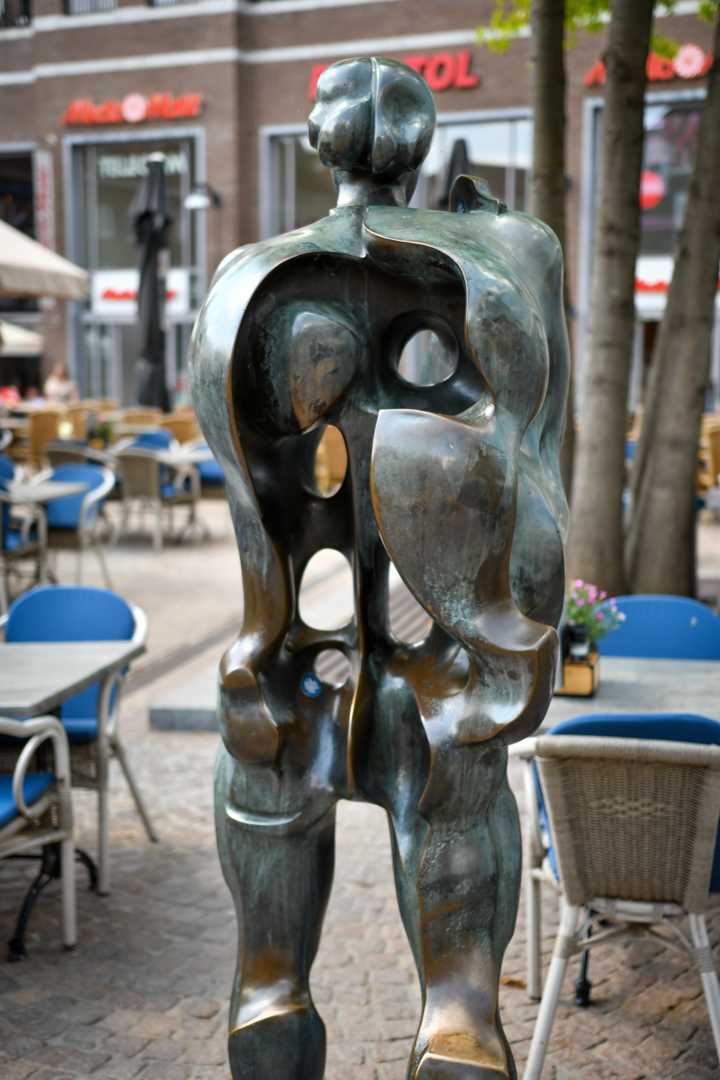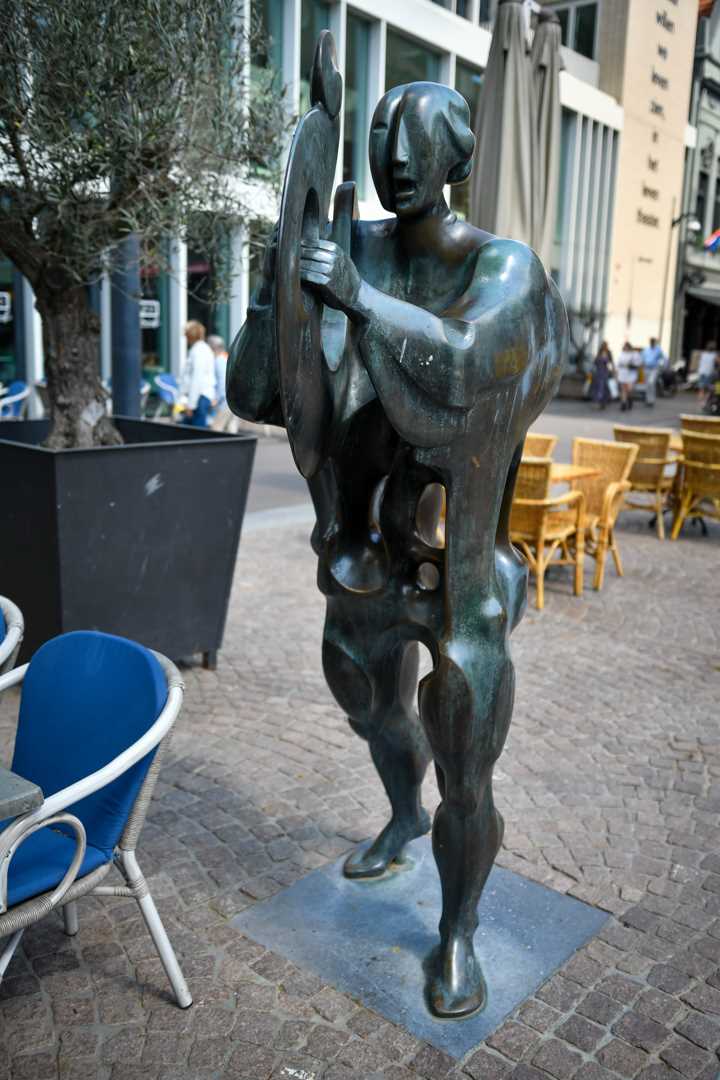Orpheus
Oude Markt
Orpheus – Fons Bemelmans
On the Oude Markt, in front of Theatre De Maaspoort, you can find a stylised statue of Orpheus, known from Greek Mythology; also regarded as the god of music. The statue actually stands on a pedestal, but only the top of it is still visible, after the middle section of the square was raised. The statue was placed in 1985, the year after the opening of the Maaspoort, after the Oude Markt had been transformed from a car park into a square with terraces.
Orpheus is best known from the myth of Orpheus and Eurydice. In this myth, Orpheus cannot come to terms with the death of his beloved Eurydice and goes in search of her in the underworld, where all deceased people gather. The underworld is ruled by Hades. Hades is impressed by Orpheus’ singing and finally allows him to take his wife up there. However, Hades’ condition is that he must never look back. Just before he reaches the top, Orpheus looks back with concern and Eurydice disappears into the underworld after all.
The Artist: Fons Bemelmans
Alphons Willem Bernhard Johannes (Fons) Bemelmans was born on 8 January 1938 in Maastricht. He attended the City Academy for Applied Arts in Maastricht and then studied at the Art Academy in Cologne. There he got familiar with various other techniques, including those from Etruscan times. In Cologne, Bemelmans came to the conclusion that he found working on a small scale too limiting and he started to concentrate on sculpting and making large sculptures.
He is primarily known as a sculptor, but he also works as a goldsmith, painter, graphic artist and medallist. Myths and sagas are often a source of inspiration for him; his style is best described as abstracted-figurative. His works can be seen in various places throughout the Netherlands, even several in his birthplace Maastricht. He also exhibited regularly at Tefaf Maastricht and De Pan Amsterdam, among other places.
Old Market
The Old Market is part of the medieval street pattern of Venlo’s city centre. It is one of the oldest areas of the city. The name Oude Markt goes back at least to 1387. From 1617 to 1775, it is said that a fountain or water reservoir stood on the square. Around 1900, a piglet market was regularly held here; from 1905, there was also a drapery market.
The district where the Old Market is located was called Little Italy and is close to the port area. Nowadays, the Old Market is a square for restaurants and bars and is part of the Maasboulevard. For a long time, however, it functioned as a car park. After the construction of the Maaspoort, the square was refurbished and received a lowered middle section, accessible by a few steps. Orpheus was placed on its pedestal there in 1985. Because of the terraces that were (and still are) there and the events that were held there, the square soon got the name ‘zoèpkoel’ (Venlo slang for booze pit). This name is still used by the people of Venlo, despite the fact that the pit and steps disappeared in 2009 after the square was levelled. With this, the pedestal of Orpheus also disappeared underground.

Excavation of now-vanished lowered Oude Markt (popularly called Zoèpkoel <Zuipkuil>) in 1984. In the background theatre De Maaspoort in original design, to the right restaurant De Alde Mert (Photo: Venlo Municipal Archives)




